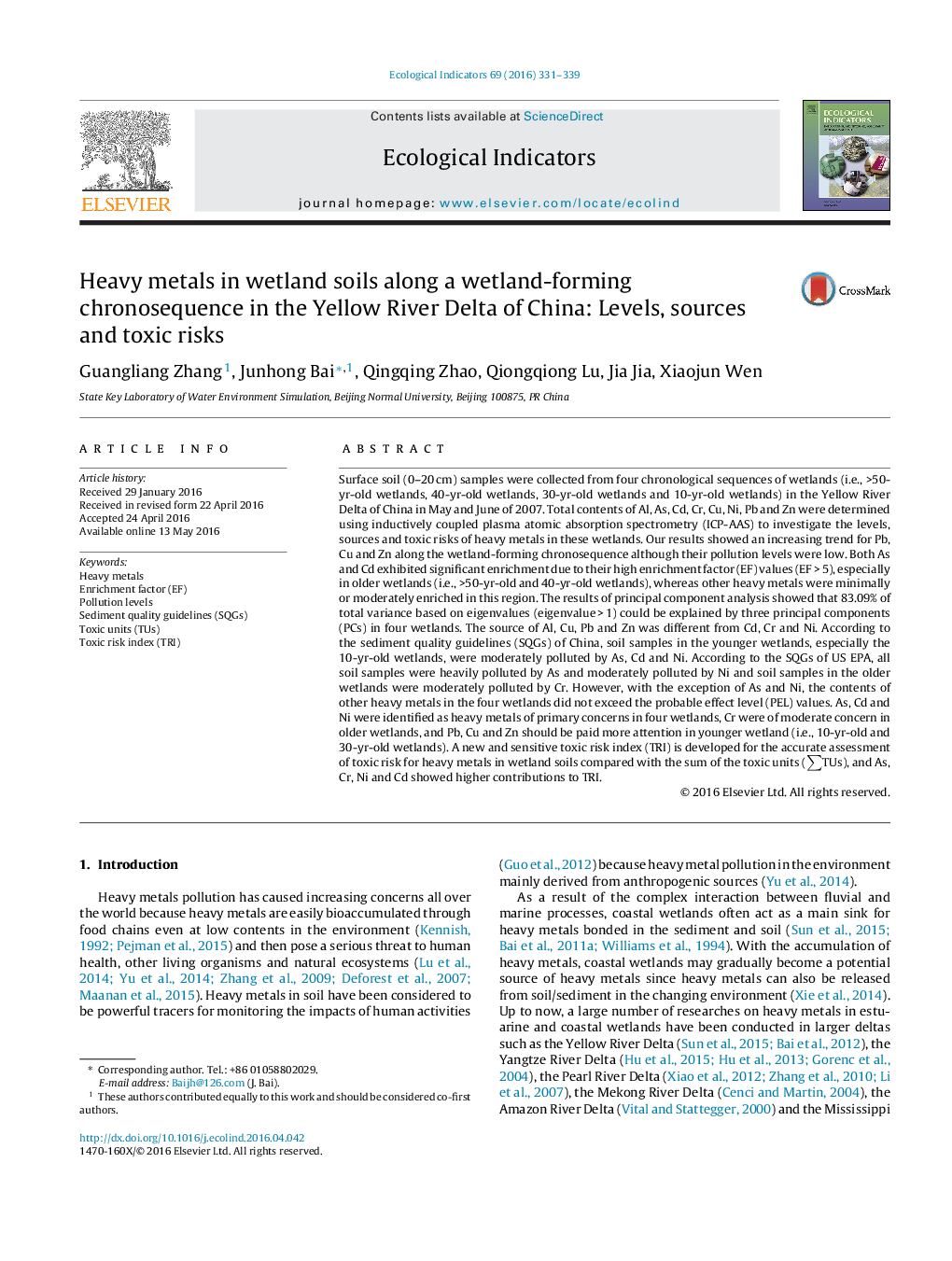| Article ID | Journal | Published Year | Pages | File Type |
|---|---|---|---|---|
| 6293237 | Ecological Indicators | 2016 | 9 Pages |
â¢A decreasing trend for Pb, Cu and Zn was found along the forming chronosequence.â¢As and Cd exhibited significant enrichment among these heavy metals.â¢Al, Cu, Pb and Zn had similar source and Cd, Cr and Ni might share another source.â¢A new index is developed for the toxic risk assessment of metals in wetland soils.â¢Cd exhibited higher contribution ratios based on TRI values compared with ΣTUs.
Surface soil (0-20 cm) samples were collected from four chronological sequences of wetlands (i.e., >50-yr-old wetlands, 40-yr-old wetlands, 30-yr-old wetlands and 10-yr-old wetlands) in the Yellow River Delta of China in May and June of 2007. Total contents of Al, As, Cd, Cr, Cu, Ni, Pb and Zn were determined using inductively coupled plasma atomic absorption spectrometry (ICP-AAS) to investigate the levels, sources and toxic risks of heavy metals in these wetlands. Our results showed an increasing trend for Pb, Cu and Zn along the wetland-forming chronosequence although their pollution levels were low. Both As and Cd exhibited significant enrichment due to their high enrichment factor (EF) values (EF > 5), especially in older wetlands (i.e., >50-yr-old and 40-yr-old wetlands), whereas other heavy metals were minimally or moderately enriched in this region. The results of principal component analysis showed that 83.09% of total variance based on eigenvalues (eigenvalue > 1) could be explained by three principal components (PCs) in four wetlands. The source of Al, Cu, Pb and Zn was different from Cd, Cr and Ni. According to the sediment quality guidelines (SQGs) of China, soil samples in the younger wetlands, especially the 10-yr-old wetlands, were moderately polluted by As, Cd and Ni. According to the SQGs of US EPA, all soil samples were heavily polluted by As and moderately polluted by Ni and soil samples in the older wetlands were moderately polluted by Cr. However, with the exception of As and Ni, the contents of other heavy metals in the four wetlands did not exceed the probable effect level (PEL) values. As, Cd and Ni were identified as heavy metals of primary concerns in four wetlands, Cr were of moderate concern in older wetlands, and Pb, Cu and Zn should be paid more attention in younger wetland (i.e., 10-yr-old and 30-yr-old wetlands). A new and sensitive toxic risk index (TRI) is developed for the accurate assessment of toxic risk for heavy metals in wetland soils compared with the sum of the toxic units (âTUs), and As, Cr, Ni and Cd showed higher contributions to TRI.
